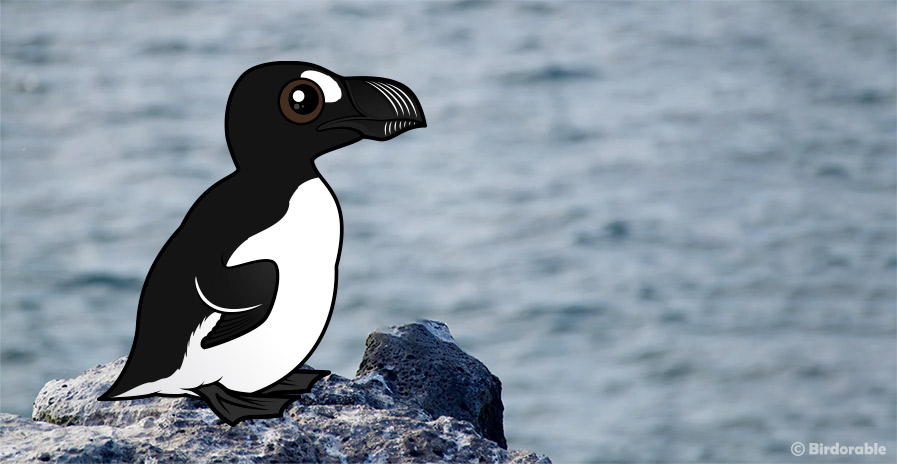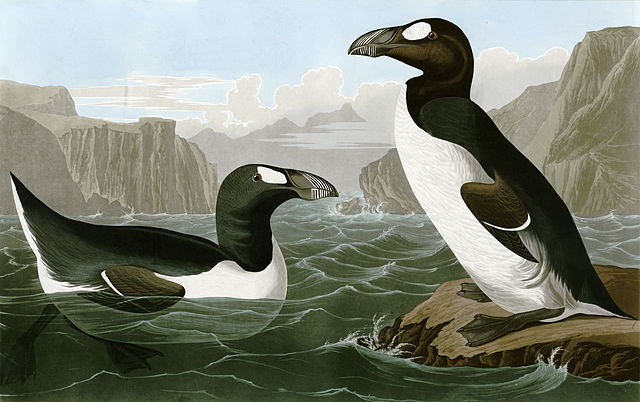The End of the Great Auk

On this date* in 1844, off the coast of Ireland, a pair of Great Auks were killed. These proved to be the last specimens of Great Auk ever collected.
The Great Auk was a flightless species. It stood up to 33 inches tall and weighed about 11 pounds. The Great Auk's scientific name, Pinguinus impennis, roughly translates to plump and flightless. The auk's black and white plumage was similar to that of penguins; penguins are so named after the auk's scientific name due to this similarity. Despite the physical similarities, the species (auks and penguins) are not closely related genetically.
Great Auks lived in the North Atlantic Ocean coasts, coming to land only for breeding. They nested colonially in areas close to favorable feeding grounds and away from predators like polar bears and White-tailed Eagles.
Although somewhat clumsy on land, Great Auks were agile in the water, able to propel itself underwater using its wings. It was also able to dive deeper and hold its breath longer than other alcid bird species.
Great Auks were once abundant. They were hunted as food by the Neanderthals more than 100,000 years ago. There are records of Great Auks being hunted more than 20,000 years ago in Spain, Italy, and France. While the Little Ice Age between the 16th and 19th centuries may have contributed somewhat to population losses for the Great Auk, it was massive human exploitation that ultimately doomed this species. Great Auks were hunted for their down and collected for their eggs, feathers, and skins.

Today there are 78 specimen Great Auks (skins) in museums and other collections. A Great Auk specimen sold to the Icelandic Museum of Natural History for £9000 in 1971; this was listed in the Guinness Book of World Records as the most expensive bird specimen ever bought and sold.
* Published sources are conflicted on the date; June 3 is also sometimes cited.










Comments
Leave a comment
Thank you!